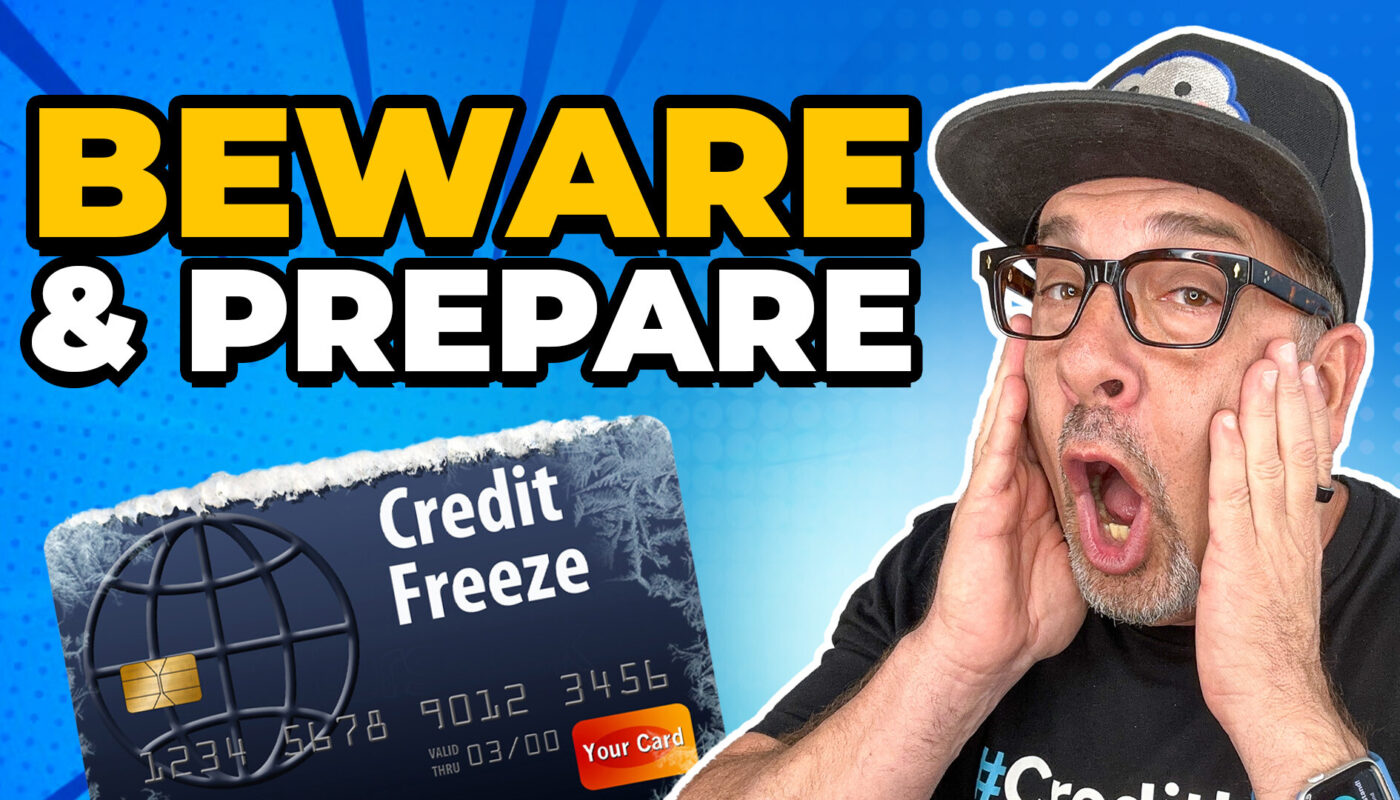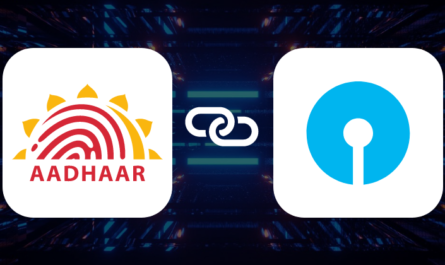When you’re trying to learn about credit repair, there are some topics with plenty of great resources and easy-to-follow steps.
Then there are the things no one seems to talk about. Or if they do, there’s a lack of clarity or cohesive advice.
In this blog post, I’m going to address two of those — credit freezing and secondary bureaus.
I’m going to cover some of the common myths and misconceptions, walk you through when you should freeze secondary bureaus, and break down the steps of how to do it.
I’ll also answer a few more key questions:
By the end of this article, you’ll know everything you need to know about secondary credit bureaus and when you should consider freezing them.
What is a Secondary Bureau?
Technically, there’s no such thing as a ‘secondary bureau’ — they’re actually ‘Specialty Consumer Reporting Agencies’ (SCRAs).
These agencies focus on collecting specific types of information beyond the traditional credit history gathered by credit bureaus.

Unlike the big three credit bureaus (TransUnion, Equifax, and Experian), SCRAs collect different data, depending on the agency. That’s because each one will collect data for specific purposes:
-
LexisNexis: Gathers public record information, employment verification, and tenant screening reports.
-
SageStream: Specializes in residential property and tenant screening reports.
-
CoreLogic: Offers property data and risk assessment services for the real estate industry.
-
NCTUE: Provides information on past phone, cable, and utility bills.
-
ChexSystems: Creates reports on consumer banking history, including check writing issues or account closures.
These agencies essentially augment the main three bureaus’ reports by providing additional information specific to a certain industry or situation (renting a property, for example).
What is a Freeze?
Before we specifically talk about freezing ‘secondary credit bureaus’, it’s important to understand what a freeze is at a higher level.
A freeze is typically where you restrict access to your credit report, making it inaccessible to potential lenders.
This might sound like a bad thing, but it can actually be a very powerful defense against identity theft and unauthorized credit applications. If lenders can’t access your credit report, then no one else can take out credit in your name.
The three main bureaus are all legally required to have a process for freezing your credit report, mandated by the Fair Credit Reporting Act (FCRA). Because of this, their processes are all quite similar.
Secondary credit bureaus (SCRAs), on the other hand, are not required to follow the same regulations as credit bureaus. That’s because the FCRA specifically applies to credit bureaus that provide credit reports used for credit-related decisions.
Despite this, most SCRAs do still offer a freeze option or something similar to limit access. Although their procedures will vary by agency.
(I’ll get to that later)
When Should You Freeze Secondary Bureaus?
Although much lower risk than the data held by the main credit bureaus, there are still going to be times where you should consider implementing a ‘freeze’ with one or more of the secondary bureaus:
-
Identity Theft Concerns: If you suspect you might be the victim of identity theft, or think someone might be misusing your information to apply for rentals or utilities in your name, freezing your account with the SCRA is a smart move.
-
Frequent Applications: If you’re actively applying for jobs or rentals, freezing your account with SCRAs can help control who can and can’t access your information, limiting yourself to only legitimate inquiries.
-
Heightened Security: For an extra layer of security, you can choose to freeze your account with certain SCRAs, especially if you’re not actively seeking employment or rentals.
How to Freeze Secondary Credit Bureaus
As I mentioned earlier, there’s less of a standardized freeze process across the different SCRAs, because they don’t fall under the same legislation as the main credit bureaus.
So to make it a bit simpler for you, I’ve summarized the process for locking or opting out of sharing your information for the six most common secondary credit bureaus:
LexisNexis & SageStream
1. Request a security freeze:
-
Online through the LexisNexis Risk Solutions Consumer Center website.
-
By phone at 1-800-456-1244.
-
By mail:
LexisNexis Risk Solutions Consumer Center
Attn: Security Freeze
P.O. Box 105108
Atlanta, GA 30348-5108
2. There is no fee to apply, lift, or remove a security freeze from your file.
3. Once LexisNexis verifies and processes your request, you will receive a confirmation letter via U.S. Mail.
CoreLogic
Although CoreLogic doesn’t explicitly mention a ‘freeze’, they do provide ways to contact their Consumer Services Department, who are most likely to be able to help:
You can contact them by phone Monday through Friday from 6:00 a.m. to 5:00 p.m. on 800-637-2422.
Or you can contact them by mail here:
Credco Consumer Services Department
P.O. Box 509124
San Diego, CA 92150
NCTUE
1. Request a security freeze:
-
Online through their Exchange Service Center
-
By phone at 1-866-349-5355.
-
By mail:
Security Freeze
Exchange Service Center – NCTUE
P.O. Box 105561
Atlanta, GA 30348
2. When requesting a freeze, you will need to provide information such as your name, address, date of birth, Social Security Number, etc.
3. Once your request is processed, NCTUE will send you a confirmation letter via U.S. Mail.
ChexSystems
https://www.chexsystems.com/security-freeze/place-freeze
1. Request a security freeze:
-
Online through their Consumer Portal
-
By phone at 800-887-7652.
-
By mail:
Chex Systems, Inc.
Attn: Security Freeze Department
PO Box 583399
Minneapolis, MN 55458
2. When requesting a freeze, you will need to provide your full name, current address, date of birth, and Social Security number.
3. Once your request has been received, ChexSystems will respond by mail.
The Effects of Freezing Your Secondary Bureaus
As I’ve mentioned, freezing your credit with secondary bureaus can provide an additional layer of protection against identity theft and fraud.
But it’s also important to consider the different pros and cons of requesting a freeze, and to be aware of what happens once an account is frozen.
Pros of Freezing Secondary Bureaus
Enhancing security is obviously the main reason to freeze your account with an SCRA. It prevents unauthorized access to your personal information, reducing the risk of identity theft and fraud.
Another good reason is to gain control over your personal data. By freezing your account, you limit the ability of these agencies to share your information with third parties without your consent.
You also get the peace of mind knowing your data is protected. This can be especially important if you’ve previously been a victim of identity theft. And it doesn’t cost anything!
Cons of Freezing Secondary Bureaus
As you can see, there are plenty of reasons to freeze your secondary bureau account, but that doesn’t necessarily mean you should run out and do it right now.
For a start, freezing and unfreezing your accounts can be time-consuming, especially if you need to do it with multiple bureaus. Each bureau may have its own process, requiring you to manage multiple accounts and applications at a time.
Freezes can also cause massive delays with things like applying for a job or renting a new property. You’ll likely need to temporarily lift the freeze, which isn’t always going to be a quick process.
Freezes also only give you limited protection. Sure, it can prevent new accounts from being opened in your name, but it doesn’t protect you from fraudulent activity on existing accounts. You will still need to monitor your accounts regularly for any suspicious activity.
It’s important to note because there’s lots of rumors going around but a credit freeze actually doesn’t affect your credit score at all. I’m sorry to break it to you but it doesn’t help with credit repair. A credit freeze only stops lenders from ACCESSING your reports. It won’t stop a dispute process or wipe anything from your record.
What Happens After Freezing
Once you successfully freeze your accounts with secondary bureaus, you should notice the following things:
-
Restricted Access: The agencies won’t release your information to third parties without your explicit authorization. This means that new applications cannot be processed without your consent.#
-
Confirmation: You will receive a confirmation letter or email from each agency, often including a PIN or password that you will need to unfreeze your account in the future.
-
Ongoing Monitoring: While the freeze is in place, you should continue to monitor your existing accounts for any signs of fraudulent activity. A freeze does not prevent fraud on accounts that are already open.
-
Temporary Lifts: If you need to apply for new credit or services, you can temporarily lift the freeze. This can usually be done online, by phone, or by mail, using the PIN or password provided by the bureau.
How Credit Repair Cloud Helps
I built Credit Repair Cloud to make it easier for individuals and credit repair businesses to manage and dispute items on credit reports.
It primarily focuses on the three major credit bureaus (Equifax, Experian, and TransUnion), but it also provides resources and support for dealing with secondary bureaus:
Dispute Management
Credit Repair Cloud simplifies the creation and management of dispute letters for various credit reporting agencies, including secondary bureaus. This streamlines the dispute process and makes it easy to track them in one place.
Official Addresses
We also provide the official addresses for sending dispute letters to both major and secondary bureaus. This makes sure you send your disputes to the right places.
Templates and Guidance
Credit Repair Cloud offers templates and step-by-step guidance for creating effective dispute letters. This includes instructions for handling disputes with secondary bureaus, making it easier to address issues across all relevant agencies.
Tracking and Follow-Up
Because you’re tracking all your freezes and disputes in one place, it’s much easier to keep track of everything and follow up as necessary. This is particularly useful when dealing with multiple bureaus, as it can be difficult to keep on top of responses and next steps manually.
What should you do now?




